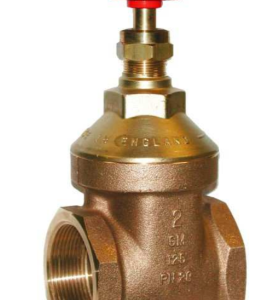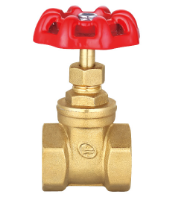Description
Gate Valves: Principles and Applications – A Comprehensive Guide to Functionality and Usage
Introduction:
Gate valves are essential components in fluid control systems, providing reliable and efficient flow regulation in various industrial applications. This comprehensive guide aims to explore the principles, functionality, and diverse applications of gate valves, shedding light on their importance in different sectors.

1. Understanding Gate Valves: An Overview
Gate valves are linear motion valves that utilize a sliding gate mechanism to control the flow of fluids. They consist of a gate or wedge-shaped disk that slides between two parallel seats within the valve body. By raising or lowering the gate, flow can be either completely shut off or allowed to pass through unrestricted.
2. Operating Principles And Designs
2.1 Rising Stem Gate Valves: These valves have a stem attached to the gate, with the upward and downward movement of the stem indicating whether the valve is open or closed.
2.2 Non-Rising Stem Gate Valves: In these valves, the gate and stem are connected, but the stem does not move up or down. Instead, a threaded mechanism operates to lift or lower the gate.

3. Applications Of Gate Valves
3.1 Oil and Gas Industry: Gate valves play a vital role in upstream, midstream, and downstream operations, controlling the flow of crude oil, natural gas, and petroleum products.
3.2 Water Treatment Facilities: Gate valves are employed in water distribution systems, dams, and wastewater treatment plants to regulate water flow, isolation, and diversion.
3.3 Power Generation Plants: Gate valves are used in power plants to control steam flow, cooling water, and fuel supply, ensuring efficient and safe operation.
3.4 Petrochemical and Chemical Industries: Gate valves handle the flow of various chemicals and gases, providing precise control and isolation in critical processes.
3.5 HVAC Systems: Gate valves are utilized in heating, ventilation, and air conditioning systems to adjust and regulate the flow of chilled or heated water.
3.6 Marine and Shipbuilding: Gate valves are essential for seawater intake and discharge systems, ballast control, and firefighting applications on ships and offshore structures.
4. Advantages And Considerations
4.1 Excellent Shut-Off Capability: Gate valves offer a tight seal when fully closed, preventing any leakage or flow.
4.2 Low Fluid Resistance: Gate valves provide minimal pressure drop, ensuring efficient flow in fluid handling systems.
4.3 Versatility: Gate valves are available in various sizes, materials, and designs to suit different operating conditions and media.
4.4 Maintenance-friendly: With a simple design and fewer moving parts, gate valves are relatively easy to maintain and repair.
4.5 Limitations: Gate valves are not suitable for throttling or regulating flow due to their on/off operation.
Conclusion:
Gate valves are indispensable components in fluid control systems across different industries. With their reliable functionality, robust construction, and wide-ranging applications, gate valves provide effective flow control, contributing to the efficiency, safety, and reliability of industrial processes. Understanding the principles and applications of gate valves is essential for professionals in engineering, maintenance, and operations to make informed decisions regarding their implementation and maintenance.
Hot Tags: brass gate valve, China, suppliers, manufacturers, factory, wholesale, cheap, discount, low price, in stock, free sample,
Related products
-
Gate Valve
IFAN Brass Gate Valve
-
Air Valve
IFAN Brass Air Valve
-
Brass Valve
IFAN Gate Valve
-
Brass Valve
Gate Valve









